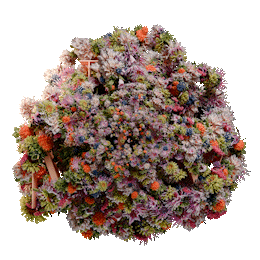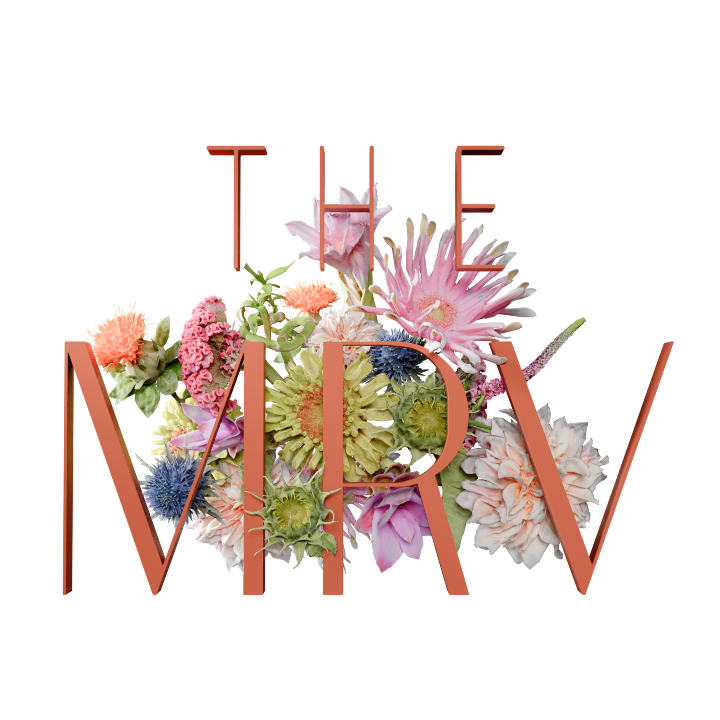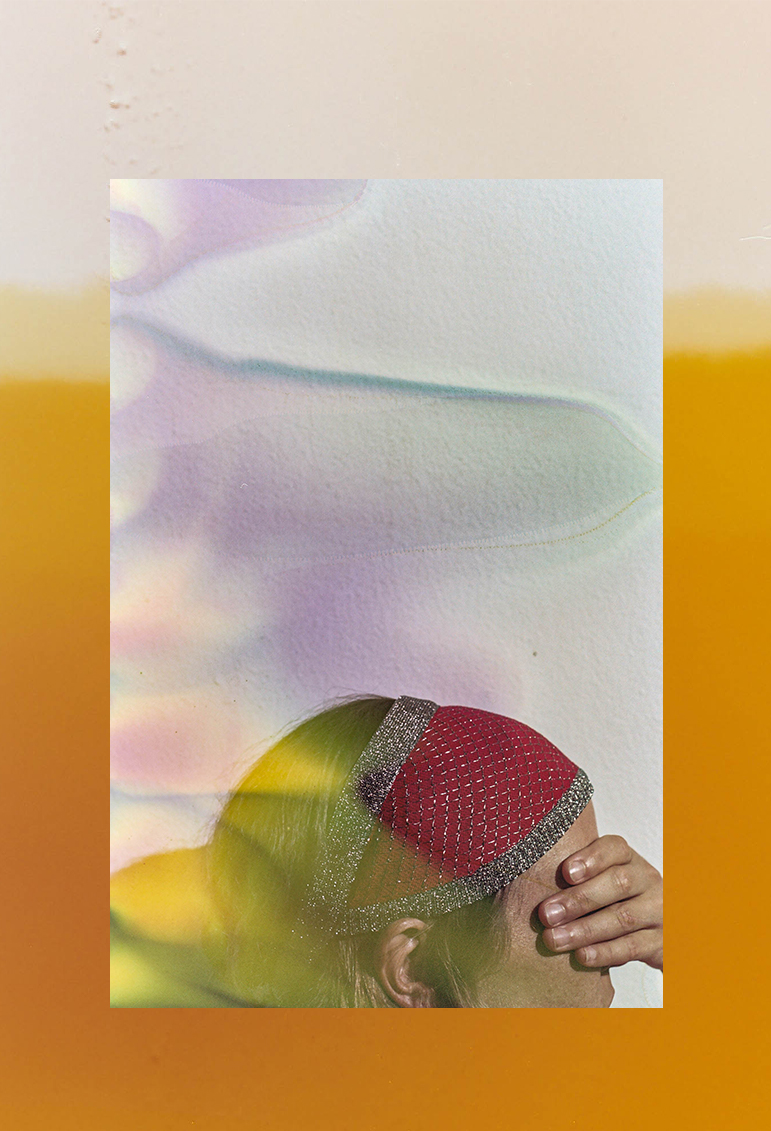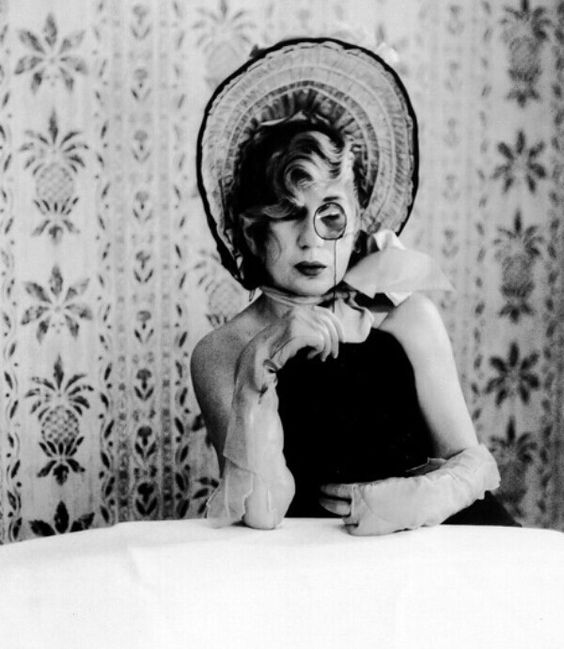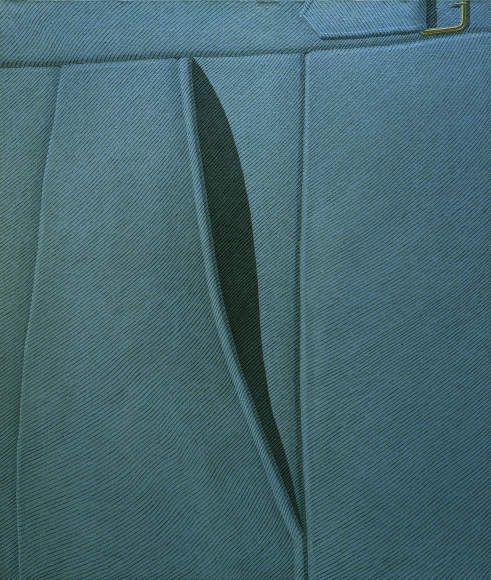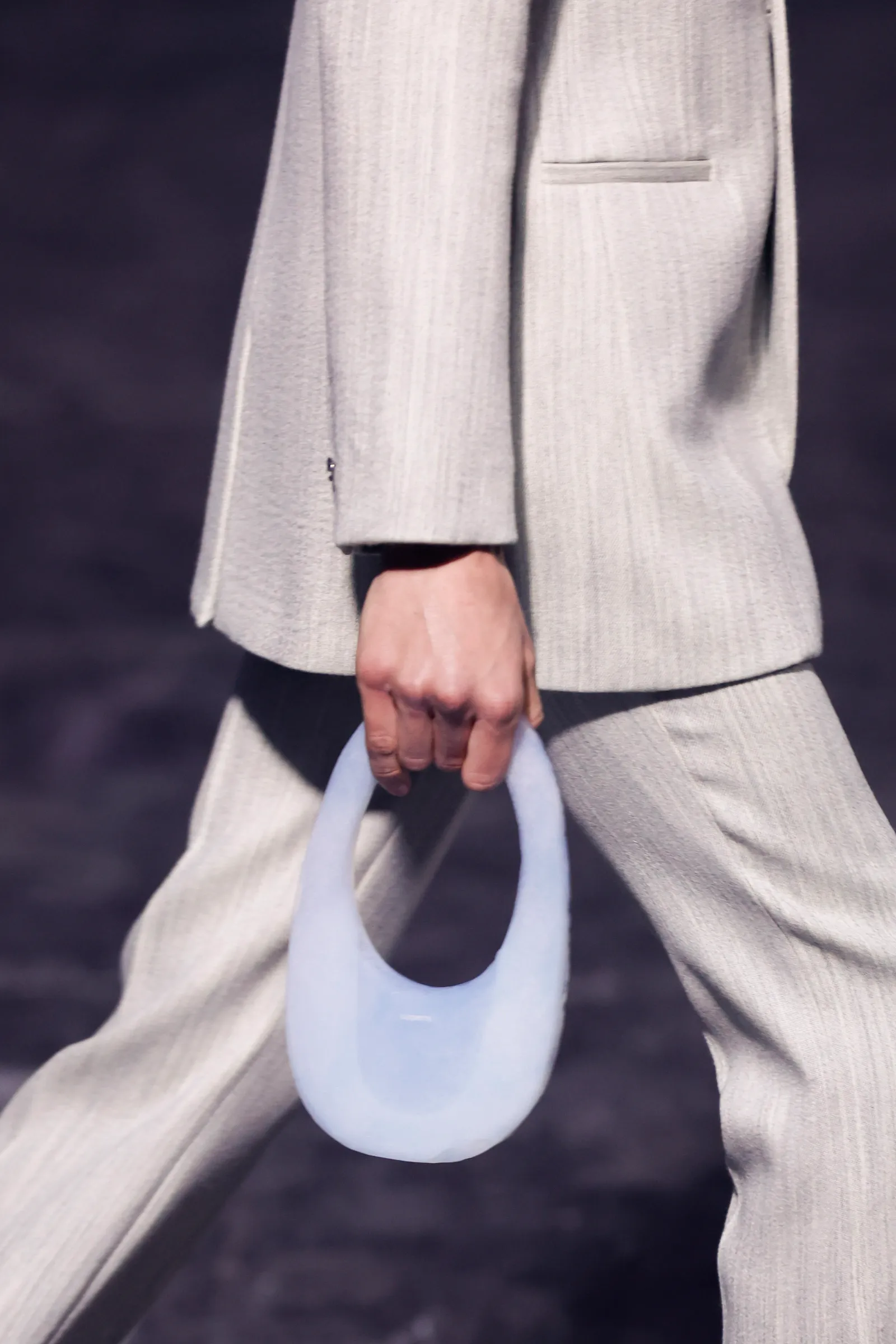
ORWELL, UTOPIA AND FASHION OF THE FUTURE
ORWELL, UTOPIA AND FASHION OF THE FUTURE
Air bags, origami accessories and sea creatures
marCH 2024 - TOUCH
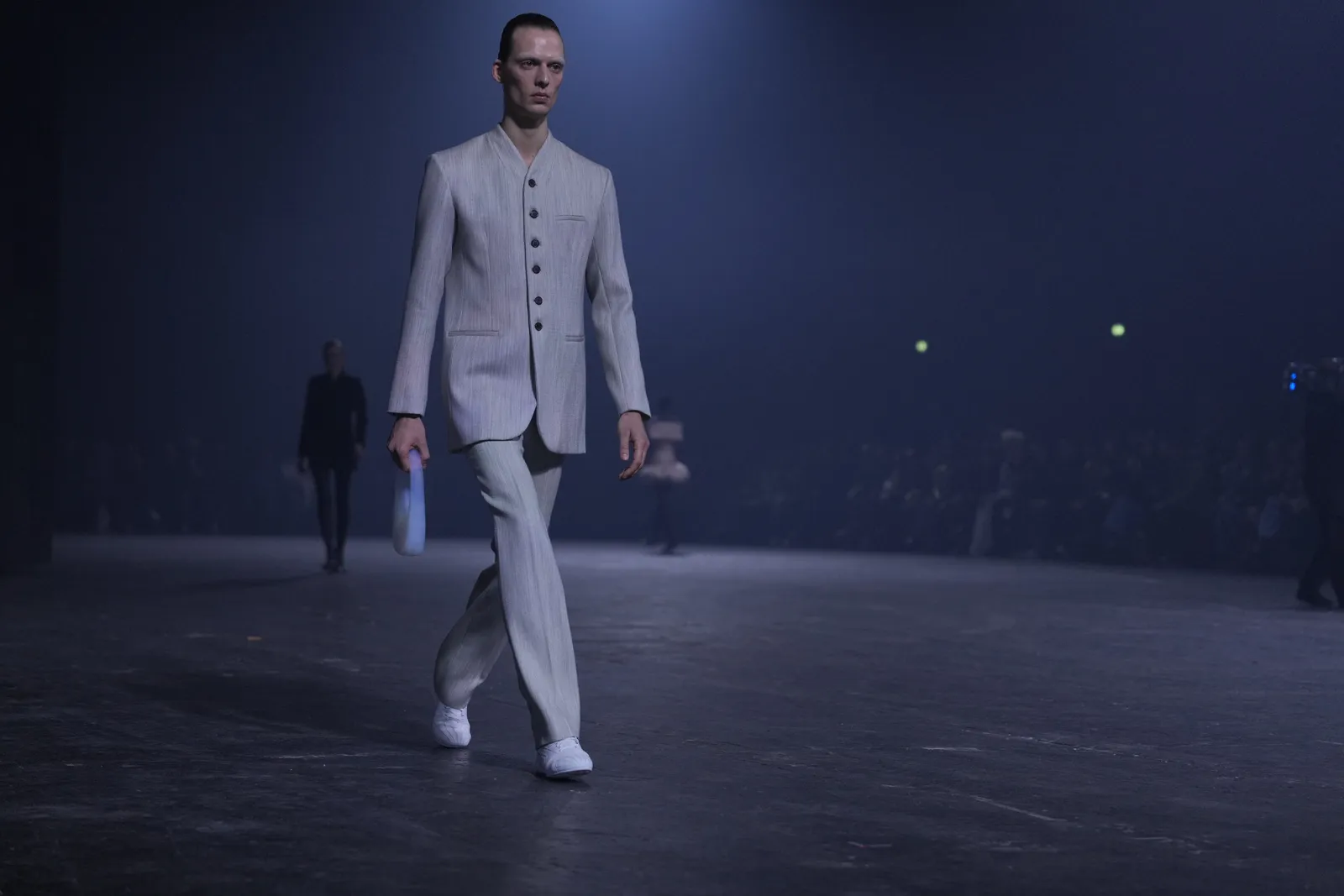
“Reality exists in the human mind, and nowhere else.”
George Orwell
Who knows what Orwell would have imagined for his 1984 in terms of fashion? Who knows if, between extreme oppression, control and manipulation, in a future not too far from the actual reality in which we live, the English writer would have hypothesized air bags, iridescent clothes, blockchain technologies and metaverses?
That fashion is a constantly evolving field, constantly influenced by new ideas and innovative concepts, Coperni has shown us once again with its air bag. Distinguishing features? The Air Swipe Bag, this is its name, is composed of 99% air, was designed by Professor Ioannis Michaloudis and is made with silica aerogel, NASA’s nanomaterial: “The lightest solid on planet Earth”.
Futuristic and striking design for a revolutionary accessory, inspired by technology and scientific research, the air bag is characterized by clean lines, geometric shapes and innovative materials that give it a unique and contemporary look. It is forbidden to question its functionality, because this is a bag in all respects, with a practical side useful for carrying everyday objects, but ready to turn into a work of art. An interesting fusion of pioneering fashion spirit, technology and design The Air Swipe Bag demonstrates how the fashion industry is able to embrace and reinterpret concepts from different fields, thus creating something new and original. An accessory that became a media sensation even before it appeared on the catwalks of Paris Fashion Week.
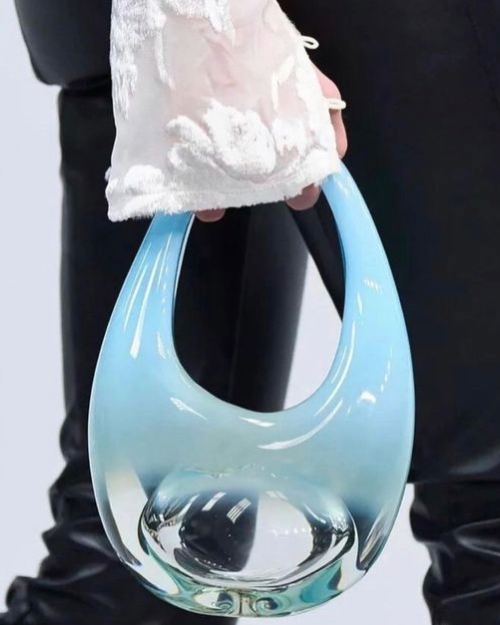
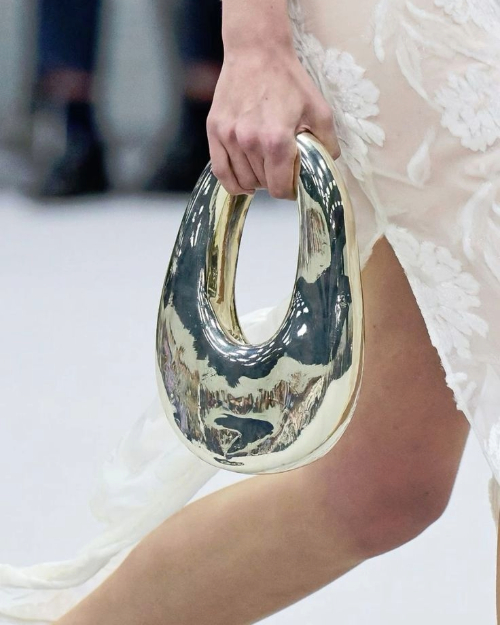
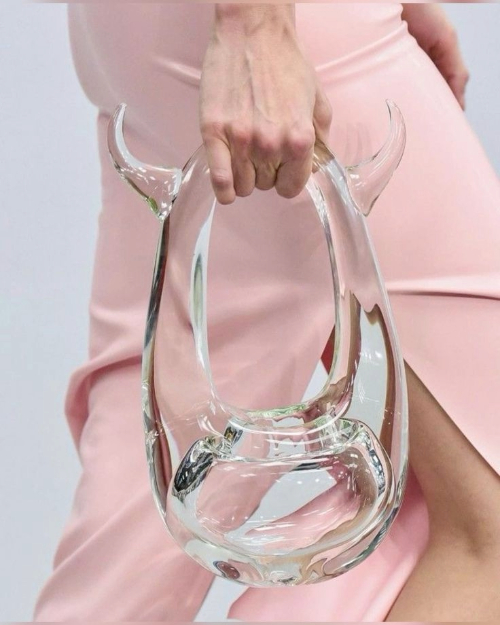
But The Air Swipe Bag, although it is one of the most surprising, is certainly not the only one of the striking surprises that fashion has given us throughout its life.
It is worth mentioning Elsa Schiapparelli, a pioneer in introducing eccentric and experimental elements into the sector, also thanks to her proximity to the artistic avant-garde. Schiaparelli was in fact the first designer to make alternative proposals with synthetic fabrics and experimental materials: rooster feathers, monkey hair, plexiglass, glass, porcelain, cellophane. The influence of Futurism and Cubism leads to creations of great charm: sleeves inspired by aircraft fuselages, bright chromatic tones and original textile materials. Surrealism will also greatly influence the work of Elsa Schiapparelli, who will apply the theories of movement driven by a constant search for the dimension of the marvelous and surprising. In fact, the designer’s creations go beyond the idea of beauty, and go beyond the concept of aesthetically acceptable to explore the boundaries of the unconscious. So butterflies land on gloves and a lobster ends up on a silk dress. And then, thanks to the collaboration with the most interesting artists of the time, here are the mermaid brooches, necklaces with ceramic tablets and bracelets covered with fur. With the designer, a reflection on beauty, kitsch aesthetics and good taste opens. Maxi necklaces in the shape of crabs or herringbones, creatures of the sea printed on skirts and thorns reminiscent of those of sea urchins: even in the latest Paris fashion show, the brand’s iconic stylistic features have come back to life.
Among the tutelary deities of textile experimentation, it is impossible not to include Issey Miyake, a forerunner of trends and inventor of new processing techniques, a visionary genius, creatively free and pure. For forty years, the work of the Japanese master has been constantly evolving. He was echoed by colleagues Rei Kawabuko and Yohji Yamamoto, who, like Miyake, in the late ’70s and ’80s helped revolutionize the fashion landscape by questioning the traditional concept of Western beauty, preferring asymmetries, imperfections, layered fabrics and abstract shapes. But it will be above all Miyake, the “tailor of the wind”, as he is remembered, who will make textile research and scientific application his strong point. Combining the traditional art of origami, clothes and objects are folded into small rectangles transforming into dresses, skirts, trousers but also bags, backpacks and accessories.
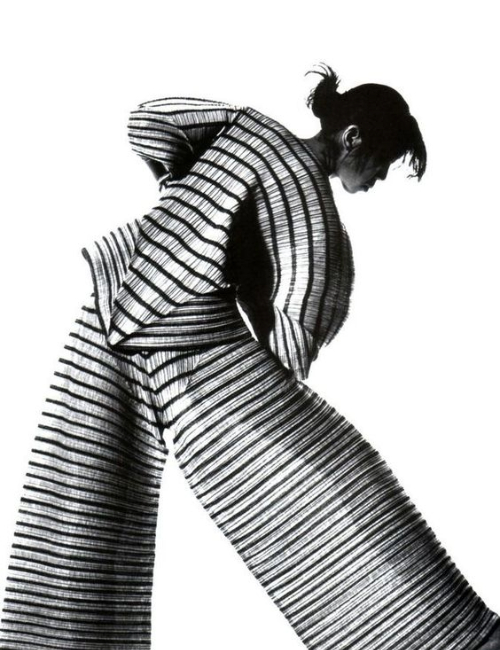
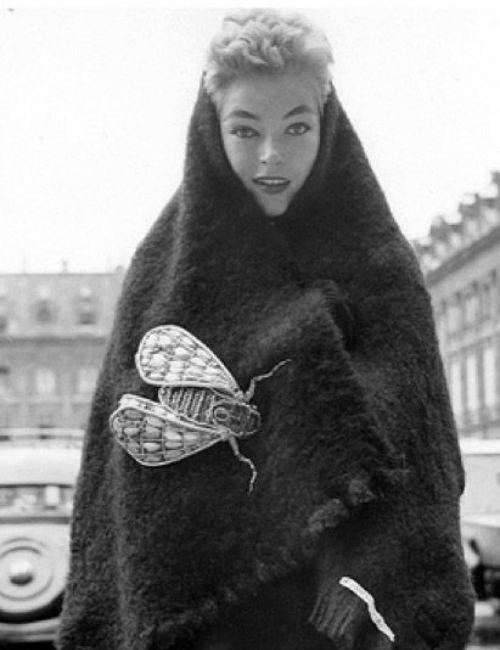

Rethinking fashion in new ways, with the difficult task of building a bridge to the future, not only in technological terms, but by triggering a process of renewal that goes beyond the simple design of clothes and accessories. Imagining fashion as an invitation to explore new perspectives, to challenge existing conventions and to hypothesize a future projected towards social and cultural change. This seems to be the task that Demna has given himself, who, perfectly immersed in our “age of anxiety”, parades models with latex masks and oversized suits for Balenciaga: a reflection on the present in which everything is falling apart between pandemic, cultural conflicts, wars, climate crisis and inflation. The only hope? The techno soundtrack, which recently became a UNESCO World Heritage Site.
And going back to Orwell, perhaps his most enduring lesson is the one that spurs us on not to be satisfied with the present picture; to aspire to a different and better future. Who knows if fashion will be able to make culture its banner and rewrite the rules of the game. We can’t wait to find out.
BY Francesca Russano
You may also read
FASHION AND STARS
FASHION AND STARS The invisible becomes visible FEBRUARY 2024 – TOUCH In the world of Universo
ANNA PIAGGI AND HER DP
THE SHAPE OF FASHION THINKING Anna Piaggi and her DP marCH 2024 – TOUCH Courtesy Paolo Castald
THE UNIQUE DESIGN OF THE DETAILS
THE UNIQUE DESIGN OF THE DETAILS The Erotic Secret of Pockets APRIL 2024 – TOUCH Domenico Gnol

